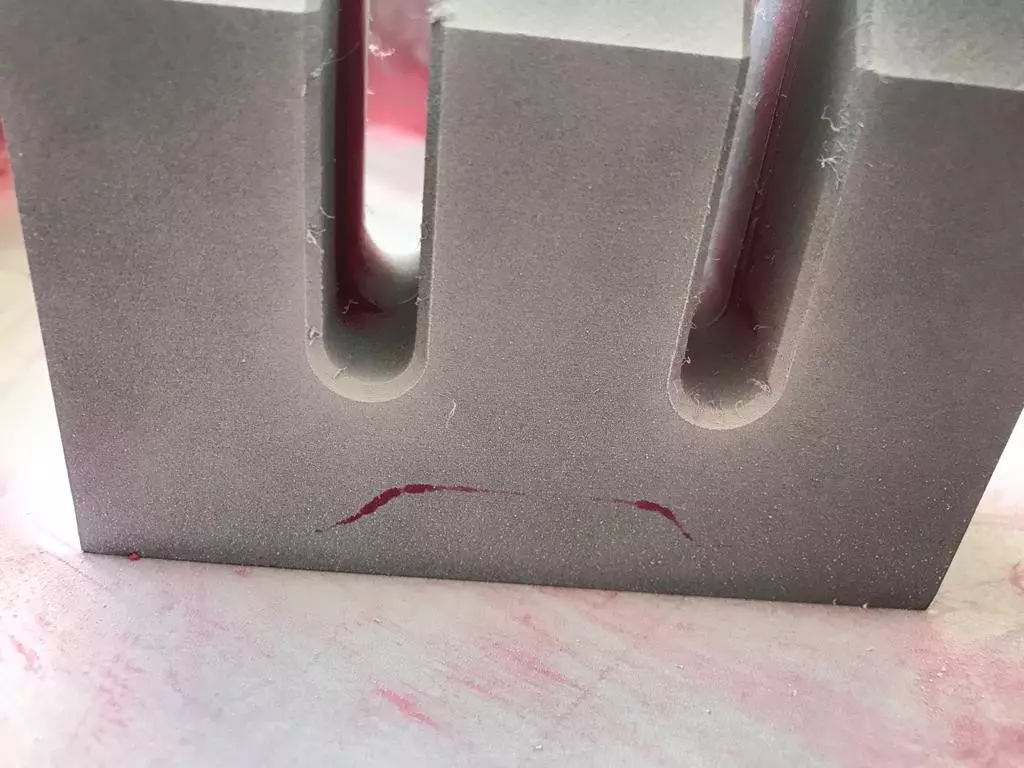FAQ: More than one of my ultrasonic horns have a very annoying high pitch sound problem during operation and there is no strong wave for welding above the surface of the horn, but a weak wave and a very loud noise. No cracks or breaks in the [piezo] crystals were observed, so what is the solution for this problem? Mr. T.M.A.

Noise in the ultrasonic horn indicates cracking, which can be confirmed with the TRZ® Analyzer.
Annoyingly high pitch noise and low performance is typical of a cracked part, usually the horn (sonotrode). It may also be the booster or the converter front mass, or even one of the studs or the converter bolt. The figure shows a defective sonotrode with the crack location revealed by dye penetrant inspection.
It is not possible to refurbish a cracked part, so if that is the case, it must be replaced immediately to avoid damaging other parts or the generator. One can use the TRZ® Analyzer to troubleshoot the acoustic stack.
The noise is generated by the crack’s surfaces friction during vibration at high power. This friction converts vibration into noise and heat, reducing the amplitude and causing the part temperature to rise. Besides, the crack decreases the frequency, placing it out of tolerance limits. When testing a cracked part with the TRZ Analyzer, it is possible to find low frequency and low mechanical quality factor (Qm).
It is possible to confirm the crack presence and identify its location by dye penetrant inspection (DP), also called liquid penetrant inspection (LPI). The procedure is simples and needs only a couple of sprays cans (penetrant and developer). The figure above shows a faulty horn with the crack highlighted by dye penetrant inspection.
Notes:
- Crack occurrence is caused by material fatigue and this process is accelerated by temperature, so it is critical to keep the ultrasonic parts operating as close to room temperature as possible. In general, if you are not able to hold the part in your hands, it is too hot (temperature higher than 50°C/122°F), then a crack by fatigue is likely to occur. If you need to use an infrared thermometer, remember to stick a black electrical tape over the ultrasonic part as target or to adjust the thermometer emissivity to the material under test (shining metallic surfaces have low emissivity).
- When the new horn cracks again and again near the same location and the operation temperature is ok, the failure cause may be stress concentration. The figure above is a typical example. To solve this issue, it is necessary to improve the stress distribution by adjusting its geometry via Finite Element Analyses (trial and error also works, but it is too expensive).
Learn more about tuning of ultrasonic horns and testing of acoustic stacks.
Learn more about preventive maintenance of ultrasonic acoustic stacks.
